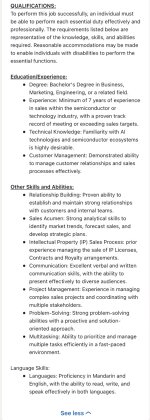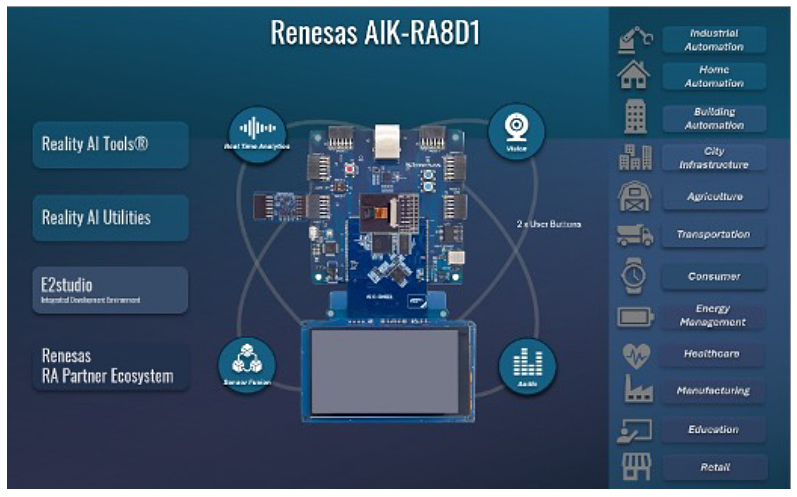The Renesas/Aizip solution uses the RA8D1 MCU, built on the Arm Cortex-M85 core, running an ultra-efficient Aizip TinyML facial recognition model - all 100 % on-device, without needing internet access.
We’ve already validated Akida with Arm's Cortex-M85 proving compatibility. So, while current Aizip stacks run purely TinyML, I suppose there's nothing stopping Akida from augmenting them, particularly where power savings or on-device learning is required.
Aizip & Renesas - First Production - Quality Facial Recognition to Edge Devices and IoT
Image
Nalin Balan
Director, AI Center of Excellence (COE) Customer Success
Image
Haoguang (Kai) Cai
Product Manager, Aizip
Published: July 18, 2025
The Challenge of Facial Recognition on Resource-Constrained Devices
Facial recognition has become a standard on high-performance devices like smartphones and PCs. However, integrating this technology into resource-constrained edge and IoT devices has remained problematic. For example, enterprise printers requiring user authentication, access control panels, time clocks, and point-of-sale terminals all represent potential applications where facial recognition would add huge value, but traditional solutions exceed their computational capabilities.
Renesas and
Aizip developed a face identification solution to address this gap by enabling facial identification to run on low-power, cost-effective microcontroller units (MCUs). This means device manufacturers and integrators can now deploy sophisticated facial recognition capabilities in edge devices and IoT hardware without requiring cloud connectivity or external processing, delivering local, private, and responsive identification right where it's needed.
The facial recognition solution for edge devices and IoT with Renesas
RA8D1 Arm® Cortex®-M85 microcontroller unit (MCU):
- Runs entirely on-device without cloud connectivity, supporting up to 100 users, and maintains stability with face accessories (glasses and similar items)
- System achieves >99% accuracy in customer testing while using minimal resources (under 2MB flash, under 1MB RAM)
- Enables secure authentication for printer access, personalized smart home control panels, and building entry systems
Image
Hardware Platform: AIK-RA8D1 Board
The
AIK-RA8D1 board integrates advanced AI acceleration capabilities, making it an ideal solution for developers looking to implement real-time intelligence in embedded systems. Its versatility allows deployment across a range of IoT applications in the industrial and security sectors while maintaining cost-effectiveness.
Image

Key Features of the AIK-RA8D1 Board
The
480MHz RA8D1 MCU with the
Helium extension in the Arm Cortex-M85 core provides robust processing power, energy efficiency, and
4X speedup in ML performance, making real-time facial recognition feasible on this class of hardware.
- Multiple Connectivity Options – Includes Pmods™, USB, CAN/CAN FD, Ethernet, and Camera I/F for seamless integration.
- Rich Display Interfaces – Supports MIPI-DSI for high-resolution displays, making it perfect for AI-driven HMI applications.
- Advanced Peripherals – Features multiple GPIOs, ADCs, and I2C/SPI/UART interfaces for flexible device interfacing.
Image
Figure 1. AIK-RA8D1 Connected with Renesas' Software and Partner Ecosystem
Effortless and Secure Face Recognition with FaceID:
FaceID makes your experience seamless and secure in two simple steps.
- Quick Setup – Just provide a few reference images during registration. The system securely stores them on the device, no internet needed, and keeps your data private and protected.
- Instant Recognition – When you access the system, FaceID automatically detects and aligns your face from a live image, then compares it with your stored profile to confirm a match—fast, accurate, and hassle-free.
The entire FaceID pipeline runs on a single MCU without external processors:
Image
Figure 2. Complete Processing Flow on a Single Renesas RA8D1 MCU
Compact, Efficient, and Reliable: Designed for Real-World Performance
Experience powerful face recognition with minimal system impact. This solution runs two complementary models on a single chip, working seamlessly together to deliver fast and accurate results:
- Lightweight Design – With flash usage under 2MB and peak RAM under 1MB, the system fits easily within the RA8D1's constraints, leaving room for other applications and reducing overall resource consumption.
Model Specifications
| Model | Parameters | FLOPS |
|---|
| Face Detection | 475K | 159M |
| Face Identification | 1088K | 28M |
- Smart Memory Management – By recycling buffers and running models sequentially, the system maximizes efficiency without compromising performance.
- Scalable User Support – Up to 100 registered users, with the flexibility to expand as hardware resources grow.
System Resource Usage
| Resource | Usage |
|---|
| Total Flash | 1742KB |
| Peak RAM | 847KB |
| Heap | 16KB |
| Stack | 8KB |
- Consistent Accuracy – High recognition performance even when users wear accessories like glasses, ensuring reliability in everyday scenarios.
Performance Metrics
| Performance Metric | Result |
|---|
| Internal Testing Accuracy | >95% |
| Customer Testing Accuracy | >99% |
| Inference Time | <800ms |
| User Capacity | Up to 100 individuals |
| Stability with Accessories | Yes (glasses, etc.) |
- Ideal for Edge Devices – The compact footprint makes this solution perfect for resource-constrained environments like IoT and embedded systems, where memory and processing power are limited.
Practical Applications
Our image-based approach provides several advantages compared to 3D mapping technologies used in smartphones and other high-end devices. The solution delivers better cost efficiency and hardware simplicity by eliminating the need for specialized depth sensors and infrared projectors. It offers an appropriate security level for office and convenience applications where extreme security measures aren't required but reliable identification is essential. Additionally, it enables flexible deployment options in various installation environments.
These characteristics make our FaceID solution ideal for:
- Enterprise printer access control for secure document retrieval
- Time clocks and attendance systems for contactless check-in
- Medical device authentication in clinical settings
- Smart home control panels for customized user experiences
- Point-of-sale terminals with customer recognition
- Industrial equipment that adjusts settings for different operators
FaceID on edge devices and IoT systems is now a reality. With Renesas' RA8D1 Arm Cortex-M85 MCUs, facial recognition can run locally without cloud connections. By operating locally, it eliminates cloud dependencies, ensures data privacy, and functions reliably even without network connectivity. This unlocks significant value for applications where authentication must be both convenient and secure.
Explore the facial recognition solution developed by Aizip and Renesas for edge devices and IoT, which runs entirely on-device without cloud connectivity.

www.renesas.com










